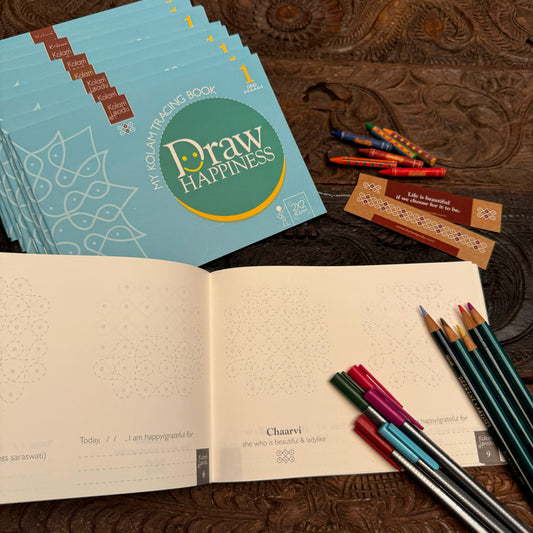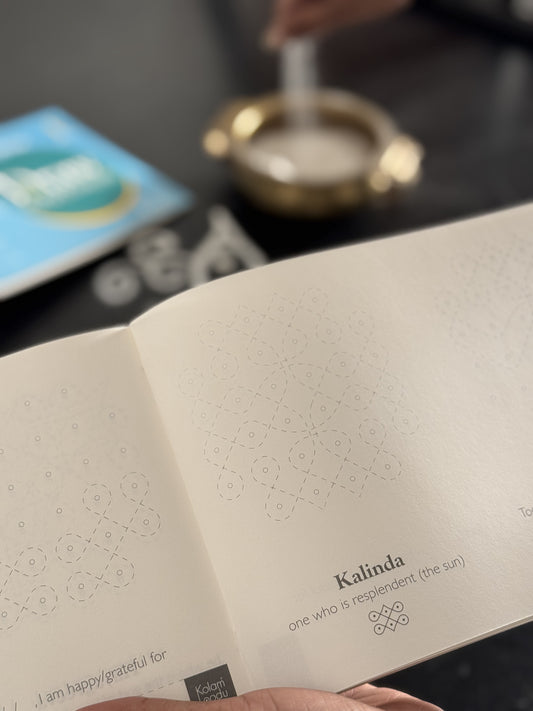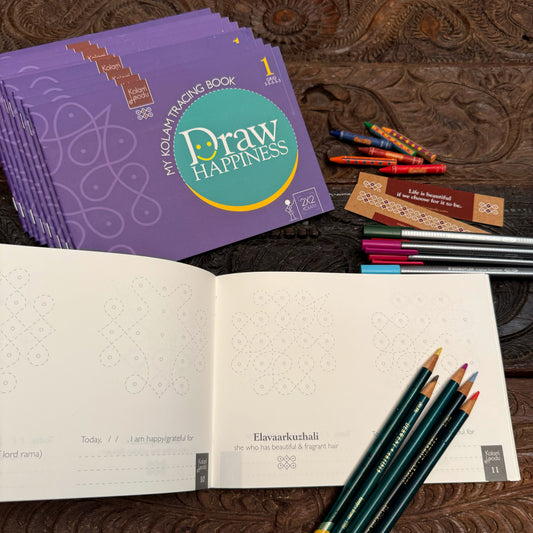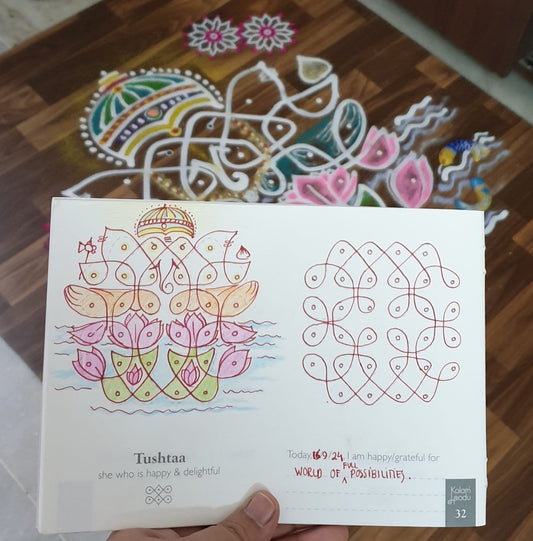Immerse yourself in the world of kolam, and you'll find that it not only produces beautiful patterns but also enhances your spatial awareness. Kolam drawing involves creating intricate designs with precise spatial relationships, from geometric shapes to symmetrical patterns. This practice hones your ability to perceive and manipulate objects in space, benefiting your spatial awareness skills. Explore the art of kolam while sharpening your sense of spatial perception and relationships.
Spatial awareness, also known as spatial perception, is the ability to understand and interpret the spatial relationships between objects, oneself, and the environment. It involves a sense of awareness about the position, orientation, and movement of objects in space. Spatial awareness enables individuals to navigate their surroundings, estimate distances, recognize patterns, and manipulate objects with accuracy.
Drawing kolam can enhance spatial awareness in the following ways:
- Geometric Patterns: Kolam designs often incorporate various geometric shapes, such as circles, squares, triangles, and curves. As individuals draw these patterns repeatedly, they become more familiar with the spatial arrangement of these shapes, leading to improved spatial perception.
- Symmetry and Balance: Many kolam designs exhibit bilateral or radial symmetry, where elements on one side are mirrored on the other. Drawing symmetrical patterns requires a keen sense of spatial awareness to ensure that the design remains balanced and harmonious.
- Dot Arrangement: Kolam artists create the framework of their designs by placing dots on the drawing surface in specific configurations. These dots serve as guidelines for the overall pattern. Understanding the spatial arrangement of these dots is essential in creating intricate and symmetrical kolam designs.
- Visualising Patterns: Drawing kolams involves visualising how the various elements of the design fit together on the drawing surface. This mental process of visualising and planning the pattern improves spatial awareness and the ability to perceive relationships between different components.
- Coordination of Movements: Creating kolam patterns involves coordinating hand movements in relation to the placement of dots and lines. This requires spatial awareness to ensure that the drawn elements align accurately with the dot configuration.
- Spatial Mapping: Kolam artists mentally map out the design as they draw it on the ground. This mapping process involves understanding how the elements in the design relate to one another in terms of space and proportion.
- Translating 2D to 3D: Drawing kolams on a two-dimensional surface requires artists to mentally translate the patterns into a three-dimensional space. This ability to perceive two-dimensional shapes in a three-dimensional context enhances spatial awareness.
- Precision and Proportion: Kolam artists aim to create patterns with precise proportions and symmetry. This attention to detail develops a better sense of spatial relationships and visual aesthetics.
Through the repetition and practice of drawing kolams, individuals develop and refine their spatial awareness. For children this is especially beneficial in the formative years.
Kolam in Tamil Nadu is muggulu in Andhra Pradesh and Telangana, rangoli in Maharashtra, hase and rangavali in Karnataka, alopana in Bengal, to name a few.
Life is beautiful if we choose for it to be. Let’s draw happiness!







